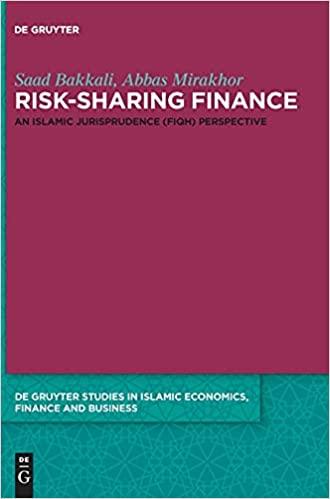Question
Please complete parts D, E, and F and the project conclusion. Part (D) Assume that inflation is expected to average 5% over the next 4
Please complete parts D, E, and F and the project conclusion.
Part (D)
Assume that inflation is expected to average 5% over the next 4 years and that this expectation is reflected in the WACC. Moreover, inflation is expected to increase revenues and variable costs by this same 5%. Does it appear that inflation has been dealt with properly in the initial analysis to this point? If not, what should be done and how would the required adjustment affect the decision?

Part (E)
Assume that you are confident about the estimates of all the variables that affect the cash flows except unit sales. If product acceptance is poor, sales would be only 80,000 units a year, while a strong consumer response would produce sales of 250,000 units. In either case, cash costs would still amount
to 45% of revenues. You believe that there is a 35% chance of poor acceptance, a 15% chance of excellent acceptance, and a 50% chance of average acceptance (the base case).
1. What is the worst-case NPV? The best-case NPV? Hint: you should consider the 5% inflation in your calculation.
2. Use the worst-case, most likely case (or base-case), and best-case NPVs with their probabilities of occurrence, to find the projects expected NPV, standard deviation, and coefficient of variation.
Part (F)
Assume that Allieds average project has a coefficient of variation (CV) in the range of 1.05 to 1.75. Would the lemon juice project be classified as high risk, average risk, or low risk? What type of risk is being measured here?
What about things change: getting worse or getting better, how people adjust investments?
Is the projects risk high or low?
Conclusion
Make your conclusion here.
Overall, in each section, in addition to your answer to those questions, you should include what you learned from the course, some summaries or your own thoughts/reflection.
Part (D) Assume that inflation is expected to average 5% over the next 4 years and that this expectation is reflected in the WACC. Moreover, inflation is expected to increase revenues and variable costs by this same 5%. Does it appear that inflation has been dealt with properly in the initial analysis to this point? If not, what should be done and how would the required adjustment affect the decision? Table 2: Allied's Lemon Juice Project Considering 5% Inflation Expected inflation 5% Years 2 0 1. Investment Outlays Equipment cost Installation CAPEX $ (380,000) (35,000) $ (415,000) Increase in inventory Increase in Account Payable ANOWC (35,000) 8,000 (27,000) 230,000 $ 230,000 1.890 $ 434,700 X 230,000 1.985 456,435 230,000 503,220 II. Project Operating Cash Flows Unit sales Price per unit Total revenues Operating costs (w/o deprn) Depreciation Total costs EBIT (Operating income) Taxes on operating income EBIT (1 - T) = Aafter tax operating income Add back depreciation EBIT (1 - T) + DEP X X X X X X III. Terminal Year Cash Flows Salvage value Tax on salvage value After-tax salvage value Recovery of NOWC Project Free Cash Flows = EBIT (1-T) + DEP - CAPEX - ANOWC $ (442,000) $ 225,010 X $ 302,480 Part (D) Assume that inflation is expected to average 5% over the next 4 years and that this expectation is reflected in the WACC. Moreover, inflation is expected to increase revenues and variable costs by this same 5%. Does it appear that inflation has been dealt with properly in the initial analysis to this point? If not, what should be done and how would the required adjustment affect the decision? Table 2: Allied's Lemon Juice Project Considering 5% Inflation Expected inflation 5% Years 2 0 1. Investment Outlays Equipment cost Installation CAPEX $ (380,000) (35,000) $ (415,000) Increase in inventory Increase in Account Payable ANOWC (35,000) 8,000 (27,000) 230,000 $ 230,000 1.890 $ 434,700 X 230,000 1.985 456,435 230,000 503,220 II. Project Operating Cash Flows Unit sales Price per unit Total revenues Operating costs (w/o deprn) Depreciation Total costs EBIT (Operating income) Taxes on operating income EBIT (1 - T) = Aafter tax operating income Add back depreciation EBIT (1 - T) + DEP X X X X X X III. Terminal Year Cash Flows Salvage value Tax on salvage value After-tax salvage value Recovery of NOWC Project Free Cash Flows = EBIT (1-T) + DEP - CAPEX - ANOWC $ (442,000) $ 225,010 X $ 302,480Step by Step Solution
There are 3 Steps involved in it
Step: 1

Get Instant Access to Expert-Tailored Solutions
See step-by-step solutions with expert insights and AI powered tools for academic success
Step: 2

Step: 3

Ace Your Homework with AI
Get the answers you need in no time with our AI-driven, step-by-step assistance
Get Started


